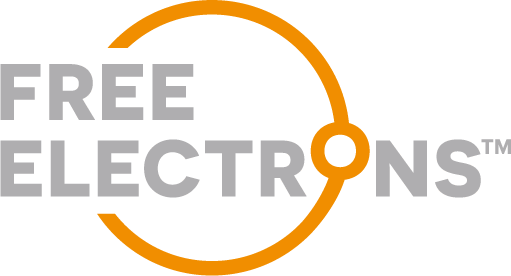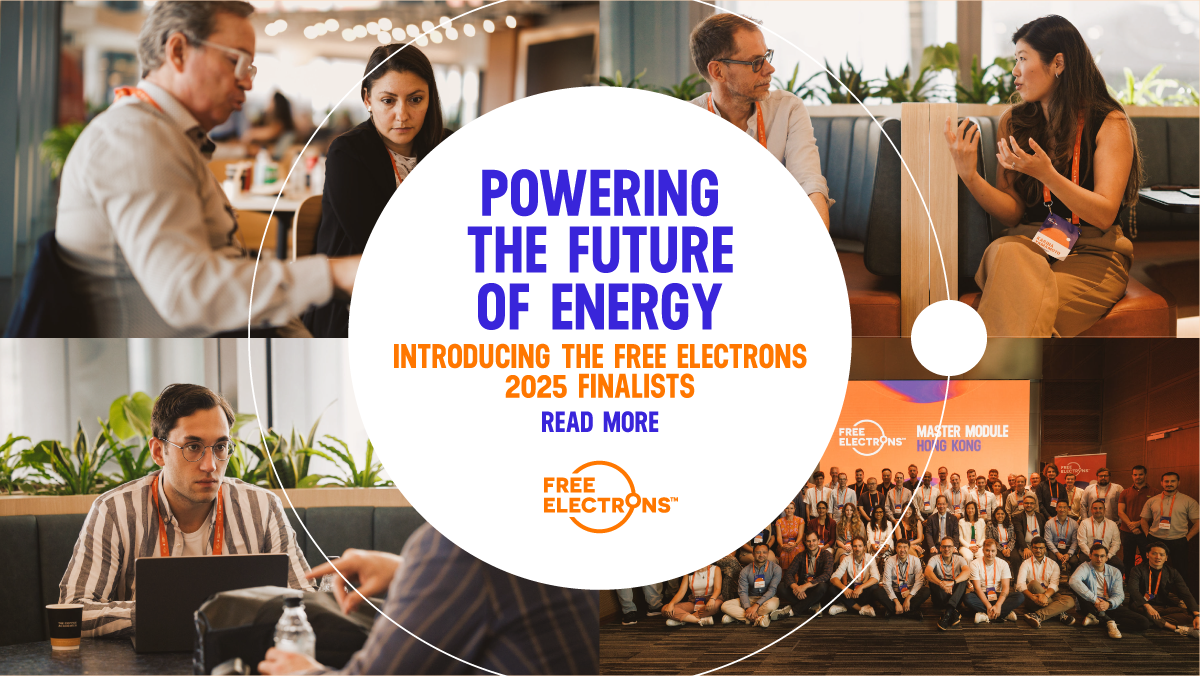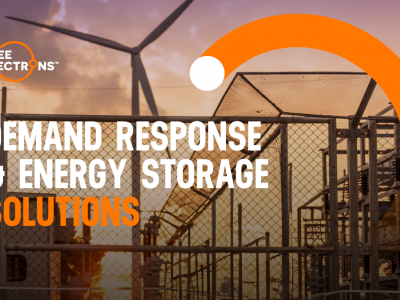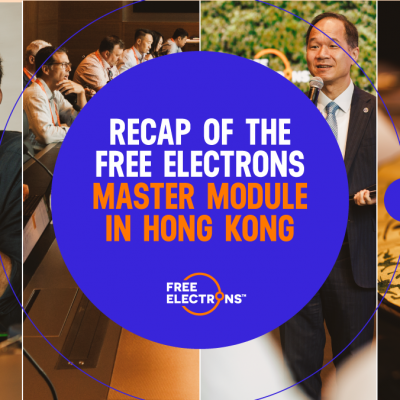Three modules and a whole lot of momentum – Free Electrons 2025 has already been a whirlwind. From the Online Pitch in Montreal, where sparks of collaboration first flew, to the Bootcamp in Sydney, and the Master Module in Hong Kong where pilots started to take shape, this year’s journey has been packed with breakthroughs.
And at the heart of it? The startups – pushing boundaries, raising rounds, and turning big ideas into tangible impact. Here’s a look at what they have been up to along the way.
The Top 15 in Action
Anzen | United Kingdom
Anzen develops prefabricated wall panels embedded with solid-state thermoelectric heat pumps to heat or cool homes. In recent field tests, these panels halved energy use compared to conventional heaters. With £1.1M in pre-seed funding, Anzen is gearing up for a commercial rollout in 2026, focusing on fuel-poor households and retrofit programs.
Assetcool | United Kingdom
Assetcool enhances the capacity of overhead power lines with a nanomaterial coating applied by robotic systems. The technology reduces corrosion, sagging, and maintenance costs while improving real-time data collection. In July 2025, the startup secured a £10M Series A round led by Energy Impact Partners to scale deployment1. With the ability to boost line capacity by up to 30% 20x lower cost than traditional upgrades, Assetcool offers a timely solution for utilities tackling grid congestion and capacity bottlenecks.
Circadian Technologies | Germany
Circadian Technologies builds modular energy management systems that simplify deploying mini-grids and hybrid solar systems. Its flagship product, Circadian Cortex, is already being used in off-grid locations, including Nigerian bank branches2. This technology empowers emerging-market utilities and IPPs to deploy reliable renewable energy faster and more cost-effectively.
EnergyHawk | United States
EnergyHawk manages a rapidly expanding commercial solar lead database, currently boosting over 200,000 entries. It offers developers building profiles, grid data and estimated demand, enabling quicker project scoping. As demand for C&I solar accelerates, EnergyHawk’s data-first approach is becoming a critical asset.
Gridbrid | Estonia
Gridbrid supports renewable project developers with a digital-twin platform that simulates project viability, financial modelling and optimisation strategies. Pulling from 600+ datasets, the tool reduces development time and risk. Currently backed by Harvard Innovation Labs, Gridbrid is gaining attention for enabling smarter, faster clean energy projects3.
Jua.ai | Switzerland
Jua.ai builds deep learning models to improve forecasting accuracy for weather-dependent sectors. Its EPT-2 model has outperformed Microsoft’s Aurora in speed and efficiency4. In July 2025, the startup raised $1.1M from Ananda Impact Ventures and Future Energy Ventures to scale its Earth Intelligence Platform, reducing uncertainty in energy training and grid planning.
Latence Technologies | Canada
Latence Technologies develops software probes that monitor latency, reliability and throughput in 4G/5G networks. Its low-intrusive bandwidth estimation tech is now being used in projects with Orange and mining consortium MISA. These capabilities are essential for autonomous operations in remote industrial settings.
Linebird | United States
Linebird offers drone-mounted payload systems for direct-contact live-line work, reducing risks and cutting maintenance costs. Their new Navigator Installation Kit and partnership with MissionGO expand their certified service offering5 – now covering tasks like resistance measurements and wildlife mitigation.
MindMargin | China
MindMargin combines AI-powered weather forecasting with energy trading tools. Its technology helps utilities and traders enhance profitability while contributing to net-zero goals. The platform is particularly relevant as tangible, data-driven trading becomes the norm.
Octaipipe | United Kingdom
Octaipipe is applying federated learning techniques to industrial IoT, enabling secure and efficient AI model training at the edge – closer to the devices and data sources. Its edge AI solution supports secure model training on-site, with more than 20 deployments across energy, telecom and utilities.
Prezerv | United States
Prezerv delivers underground infrastructure mapping using AI and electromagnetic sensing. The platform was selected by NYC’s Department of Environmental Protection in 2024 for a pilot program to improve water system reliability. Its tech reduces costly strikes and delays in urban construction.
ReWind | Norway
ReWind helps operators assess the decommissioning, emissions, and recyclability of wind assets. Its lifecycle software covers onshore and offshore farms and includes a database of over 1,000 circularity providers. In 2025, ReWind partnered with ESB to support circularity planning and decommissioning strategies – reinforcing its role as utilities seek practical tools for wind asset end-of-life management.
suena | Germany
suena offers an AI-powered Energy Trading Autopilot for battery storage systems. The startup signed a strategic partnership with Repono AB6 to optimize battery revenues across a 250MW pipeline in Germany. The tech enables real-time market participation across ancillary and wholesale energy markets.
Third Equation | United Kingdom
Third Equation’s Network Exchanger (NEx) balances voltage, reduces neutral currents and increases hosting capacity at the grid edge. Independently tested by Monash University7, the solution demonstrated remarkable results in DER integration. With rising stress on distribution networks, Nex could be key to more stable, intelligent grids.
Zero Parallax | Sweden
Zero Parallax has developed wide-angle thermal sensors and an AI software suite to enable predictive monitoring of large infrastructure. Its ZeroTools platform allows coverage of up to three hectares with a single sensor. With growing interest in preventative maintenance and real-time safety, Zero Parallax stands out as a key innovator.
What’s Next?
The Grand Finale marks the next chapter in a journey defined by progress. Many of the Top 15 startups have raised new funding, signed strategic pilots or delivered measurable impact – showing what’s possible when startups and utilities co-create the future of energy.
Be part of it – join us at the 2025 Open Day livestream and see what’s next.
Register here: https://www.eventbrite.com/e/free-electrons-open-day-2025-tickets-1618065069179?aff=oddtdtcreator





Comments